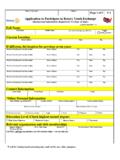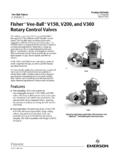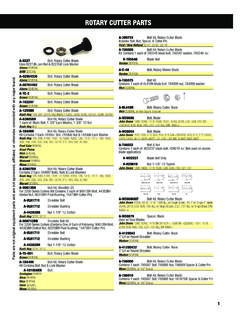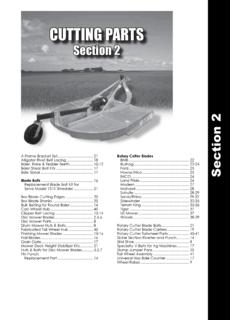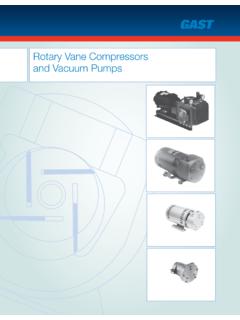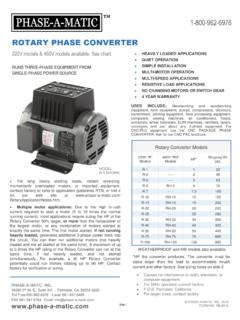Transcription of Rotary Kilns - fikcc.com
1 Rotary Kilns This page intentionally left blank Rotary Kilns Transport Phenomena and Transport Processes Akwasi A. Boateng AMSTERDAM BOSTON HEIDELBERG LONDON. NEW YORK OXFORD PARIS SAN DIEGO. SAN FRANCISCO SINGAPORE SYDNEY TOKYO. Butterworth-Heinemann is an imprint of Elsevier Butterworth-Heinemann is an imprint of Elsevier 30 Corporate Drive, Suite 400, Burlington, MA 01803, USA. Linacre House, Jordan Hill, Oxford OX2 8DP, UK. Copyright 2008 by Elsevier Inc. All rights reserved. No part of this publication may be reproduced, stored in a retrieval system, or transmitted in any form or by any means, electronic, mechanical, photocopying, recording, or otherwise, without the prior written permission of the publisher. Permissions may be sought directly from Elsevier's Science & Technology Rights Department in Oxford, UK: phone: (+44) 1865 843830, fax: (+44) 1865 853333, E-mail: You may also complete your request on-line via the Elsevier homepage ( ), by selecting Support & Contact.
2 Then Copyright and Permission and then Obtaining Permissions.. Recognizing the importance of preserving what has been written, Elsevier prints its books on acid-free paper whenever possible. Library of Congress Cataloging-in-Publication Data Application submitted British Library Cataloguing-in-Publication Data A catalogue record for this book is available from the British Library. ISBN: 978-0-7506-7877-3. For information on all Butterworth-Heinemann publications visit our Web site at Printed in the United States of America 08 09 10 11 12 9 8 7 6 5 4 3 2 1. Working together to grow libraries in developing countries | | Dedication To my wife, Sita, my number one cheerleader, to the children, and to all the children of the underdeveloped world, particularly in Africa, who, although faced with little or no technological resources, are still motivated and determined to fulfill the dreams of becoming the sci- entists and engineers of tomorrow just as their counterparts in the developed world.
3 V This page intentionally left blank Contents Foreword xv Preface xvii 1 The Rotary Kiln Evolution and Phenomenon 1. The Rotary Kiln Evolution 1. Comparison of the Rotary Kiln with Other Contactors 4. Types of Rotary Kilns 7. Wet Kilns 9. Long Dry Kilns 9. Short Dry Kilns 10. Coolers and Dryers 10. Indirect Fired Kilns 12. 2 Basic Description of Rotary Kiln Operation 15. Bed Phenomenon 17. Geometrical Features and Their Transport Effects 18. Transverse Bed Motion 19. vii viii Contents Experimental Observations of Transverse Flow Behavior 24. Axial Motion 26. Dimensionless Residence Time 28. 3 Freeboard Aerodynamic Phenomena 33. Fluid Flow in Pipes: General Background 35. Basic Equations of Multicomponent Reacting Flows 40. Development of a Turbulent Jet 43. Confined Jets 46. Swirling Jets 48. Precessing Jets 49. The Particle-laden Jet 52. Dust Entrainment 53. Induced Draft Fan 56.
4 4 Granular Flows in Rotary Kilns 59. Flow of Granular Materials (Granular Flows) 60. The Equations of Motion for Granular Flows 64. Particulate Flow Behavior in Rotary Kilns 67. Overview of the Observed Flow Behavior in a Rotary Drum 68. Modeling the Granular Flow in the Transverse Plane 72. Particulate Flow Model in Rotary Kilns 72. Model Description 73. Simplifying Assumptions 74. Contents ix Governing Equations for Momentum Conservation 75. Integral Equation for Momentum Conservation 79. Solution of the Momentum Equation in the Active Layer of the Bed 83. Velocity Profile in the Active Layer 85. Density and Granular Temperature Profiles 87. An Analytical Expression for the Thickness of the Active Layer 88. Numerical Solution Scheme for the Momentum Equation 90. Model Results and Validation 92. Application of the Flow Model 94. 5 Mixing and Segregation 101. Modeling of Particle Mixing and Segregation in Rotary Kilns 105.
5 Bed Segregation Model 106. The Governing Equations for Segregation 110. Boundary Conditions 113. Solution of the Segregation Equation 114. Strongly Segregating System (Case I) 114. Radial Mixing (Case II) 115. Mixing and Segregation (Case III) 116. Numerical Solution of the Governing Equations 117. Validation of the Segregation Model 119. Application of Segregation Model 120. x Contents 6 Combustion and Flame 129. Combustion 129. Mole and Mass Fractions 131. Combustion Chemistry 133. Practical Stoichiometry 135. Adiabatic Flame Temperature 136. Types of Fuels Used in Rotary Kilns 138. Coal Types, Ranking, and Analysis 139. Petroleum Coke Combustion 140. Scrap Tire Combustion 141. Pulverized Fuel (Coal/Coke) Firing in Kilns 143. Pulverized Fuel Delivery and Firing Systems 145. Estimation of Combustion Air Requirement 147. Reaction Kinetics of Carbon Particles 147. Fuel Oil Firing 149.
6 Combustion Modeling 152. Flow Visualization Modeling (Acid-Alkali Modeling) 154. Mathematical Modeling Including CFD 156. Gas-Phase Conservation Equations Used in CFD Modeling 158. Particle-Phase Conservation Equations Used in CFD Modeling 160. Emissions Modeling 161. Modeling of Nitric Oxide (NOx) 161. Modeling of Carbon Monoxide (CO) 163. CFD Evaluation of a Rotary Kiln Pulverized Fuel Burner 163. Contents xi 7 Freeboard Heat Transfer 173. Overview of Heat Transfer Mechanisms 174. Conduction Heat Transfer 175. Convection Heat Transfer 180. Conduction-Convection Problems 182. Shell Losses 184. Refractory Lining Materials 184. Heat Conduction in Rotary Kiln Wall 187. Radiation Heat Transfer 189. The Concept of Blackbody 190. Radiation Shape Factors 192. Radiation Exchange Between Multiple Gray Surfaces 194. Radiative Effect of Combustion Gases 195. Heat Transfer Coefficients for Radiation in the Freeboard of a Rotary Kiln 196.
7 Radiative Exchange from the Freeboard Gas to Exposed Bed and Wall Surfaces 198. Radiative Heat Transfer among Exposed Freeboard Surfaces 199. 8 Heat Transfer Processes in the Rotary Kiln Bed 205. Heat Transfer Between the Covered Wall and the Bed 207. Modified Penetration Model for Rotary Kiln Wall-to-Bed Heat Transfer 208. xii Contents Effective Thermal Conductivity of Packed Beds 211. Effective Thermal Conductivity in Rotating Bed Mode 214. Thermal Modeling of Rotary Kiln Processes 215. Description of the Thermal Model 216. One-Dimensional Thermal Model for Bed and Freeboard 218. Two-Dimensional Thermal Model for the Bed 221. The Combined Axial and Cross Sectional Model The Quasi-Three-Dimensional Model for the Bed 223. Solution Procedure 224. Model Results and Application 228. Single Particle Heat Transfer Modeling for Expanded Shale Processing 232. 9 Mass and Energy Balance 239.
8 Chemical Thermodynamics 239. Gibbs Free Energy and Entropy 240. Global Heat and Material Balance 243. Thermal Module for Chemically Reactive System 244. Mass Balance Inputs 245. Chemical Compositions 246. Energy Balance Inputs 246. Site Survey Measured Variables 247. Shell Heat Loss Calculations 251. Contents xiii Calcination Module Calculation 251. Combustion 251. Energy Balance Module 258. Sensible Energy for Output Streams 259. 10 Rotary Kiln Minerals Process Applications 265. Lime Making 265. Limestone Dissociation (Calcination) 266. The Rotary Lime Kiln 272. The Cement Making Process 275. The Cement Process Chemistry 275. Decomposition Zone 276. Transition Zone 277. Sintering Zone 277. Rotary Cement Kiln Energy Usage 278. Mineral Ore Reduction Processes in Rotary Kilns 280. The Rotary Kiln SL/RN Process 280. Roasting of Titaniferous Materials 282. The Rotary Kiln Lightweight Aggregate Making Process 285.
9 LWA Raw Material Characterization 288. LWA Feedstock Mineralogy 289. LWA Thermal History 290. Appendix 297. Index 339. This page intentionally left blank Foreword In contrast to the situation for other gas-solid reactors such as fluidized beds, the Rotary kiln reactor has so far lacked an authorita- tive treatment in a single book. Process engineers, operators, designers, researchers, and students have struggled with a widespread collection of papers, from many industries, with key articles and classical contri- butions that are over forty years old and difficult to access. At the same time, new applications for the kiln have arisen, new fuels are being used, and new tasks such as waste incineration are being applied to Kilns originally designed for other uses. Much improved understand- ing of bed processes has been developed in the past decade or so, and tools for design and analysis of existing operations, such as compu- tational fluid dynamics, have evolved from rare to widespread use.
10 There has been a pressing need for these developments to be brought together and assessed such that the kiln engineer, for example, can appreciate what can be achieved from different types of mathematical modeling and so that the fluid-particle researcher can understand what has been accomplished by recent research and where further effort is needed. The timely publication of this new book, Rotary Kilns : Trans- port Phenomena and Transport Processes, by Akwasi Boateng, admirably fills this gap. Written by an engineer gifted in his understanding of the funda- mentals of fluid-solid systems and their mathematical modeling, and having extensive experience in Rotary kiln practice, the book provides the reader with a unique vantage point from which to analyze Rotary kiln processes. The book provides a clear exposition of kiln behav- ior and of the bases and assumptions of the various mathematical models used to describe it.

